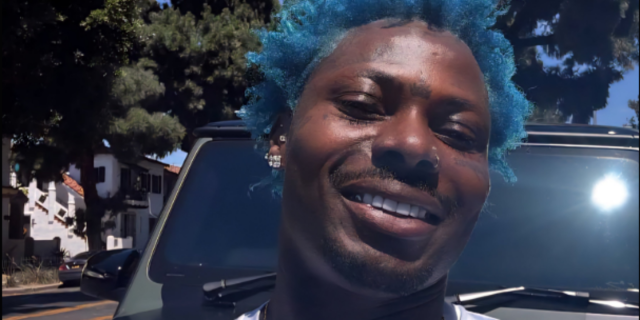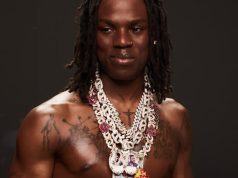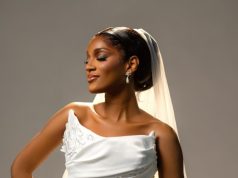Asake’s ever-changing hairstyle could be mistaken for Bitcoin for its volatility. It has become a bold storyline that fans can’t stop talking about.
Asake’s ascension, from Ahmed Ololade the hustler to Asake the global headliner, has been fueled by more than hits and headline shows. He has engineered a living, breathing brand where hair, fashion, and music are inseparable parts of one cohesive story.
Each hairstyle functions like a new album rollout: a fresh chapter, a shift in mood, a signal to the culture. None of it is random. It’s calculated, symbolic, and embedded in a broader philosophy about confidence, creativity, and control.
Some of Asake’s hairstyles over the years
You never see him coming 😮💨🔥
Which one is your favourite? pic.twitter.com/VgZwlBZr5f
— NOTJUSTOK (@NOTJUSTOK) August 18, 2025
This article traces that evolution, era by era, showing how Asake’s hairstyle became a visual language for his sound and persona.
1. Asake’s early-career hairstyle
“I might wake up tomorrow & you might not see any tattoos on my face. I love to do the things that is good for me”
– Asake shares the Inspiration behind his new look pic.twitter.com/XNRrItfVXj
— OLAMIDE 🌸💖 (@Olamide0fficial) February 3, 2025
Before the billboards and neon hair, there was grind. The “foundation era” is where you see intent forming, quietly. From 2017 through the pre-breakout years, Asake’s look was practical and familiar: close-cropped cuts, a natural afro, sometimes short twists. The fits were the uniform of Lagos’ up-and-comers, ripped jeans, graphic tees, sneakers, fashionable but not yet signature. This wasn’t a deficit; it was a stage. Without a major platform, the goal is clear, be camera-ready, be consistent, be relatable.
Asake debuts new hairstyle. 💇♂️
LUNGU BOY ERA 🔛🛞🚨pic.twitter.com/o2sVFsyfQe
— 𝗔𝗟𝗕𝗨𝗠 𝗧𝗔𝗟𝗞𝗦 📀 (@AlbumTalksHQ) July 23, 2024
These years mattered because they set the baseline. When a star later becomes highly stylized, audiences instinctively measure against their “before.” Asake’s early visual identity communicated hunger and mobility. He danced, made skits, worked behind the scenes as a road manager, roles that demanded versatility more than a fixed aesthetic. He learned how the audience watches, how the internet circulates images, and how visuals can amplify a record. What looks “ordinary” in hindsight was actually incubation: a period to study the market, refine the sound, and prepare a canvas for bolder, riskier choices.
2. Iconic jumbo braids / Dreadlocks: A visual signature
When Asake dropped the Omo Ope video, he made more than just a musical statement. Stepping out in jumbo braids and an all-white outfit, he signaled a reset, a fresh chapter and a clean canvas. The all-white look wasn’t just fashion minimalism; it symbolized ascension, a blank slate waiting for color and personality to explode onto it.
That explosion came with his now-iconic yellow-and-green dreads. In an Afrobeats space packed with rising stars, those neon locks did more than stand out, they branded him. Whether on festival stages, YouTube thumbnails, or billboards, Asake was instantly recognizable.
It was branding genius as much as style. Just like Rema’s teddy bear or Ruger’s eye patch, the dreads became his calling card, a walking logo. They carried the same energy as his music: vibrant, rebellious, and full of life. Paired with heavy jewelry and flashy outerwear, the look crystallized into an image that fans read loud and clear, streetwise luxury with the spirit of Lagos nightlife.
3. The big chop: Tattoos, fresh skin, and a bold reset
Asake new hairstyle 🔥 , he tied money on his head 😁 pic.twitter.com/jso9mEWc2z
— Dami’ Adenuga (@DAMIADENUGA) December 26, 2023
Nigerian Afrobeats star, Asake’s new look during a preview of an upcoming project ‘Why Love’, has sparked controversy among netizens.
His new look features new face tattoos and a new hairstyle, away from his signature dreadlocks with many likening him to American rapper, Kodak… pic.twitter.com/M85ZcZGAoj
— SIKAOFFICIAL🦍 (@SIKAOFFICIAL1) January 12, 2025
In January 2025, Asake shocked fans when he appeared with a clean, close-cropped afro and fresh tattoos sprawling across his face, neck, and arms, symbols of faith, music, money, and even a crown. The reaction was instant and deeply divided. Tens of thousands of comments poured in, some hailing it as a fresh start, while others begged for the return of his trademark dreads. A few even framed it as an “identity crisis,” projecting their own unease onto his transformation.
Asake new hairstyle, if na me do am una go think say i don ment pic.twitter.com/kaEdz7cAQ2
— SEUÑ (@YKoluwaseun9) August 15, 2024
But here’s why it hit so hard; in Black and African pop culture, hair isn’t just style, it’s identity. For years, Asake’s hair had been his loudest accessory, a canvas for color, length, and persona. Stripping that away left only his bone structure and piercing gaze. The tattoos added a permanent edge, reshaping his public image into something heavier, more spiritual, and undeniably grown.
From a branding perspective, it was a masterstroke. You only earn the right to reset after building something iconic enough for fans to miss. By chopping off his most recognizable feature, Asake didn’t just change his look, he sparked conversation, debate, and endless online oxygen. And by refusing to explain it, he doubled the effect. No captions, no speeches, just images. The internet argued; the artist moved forward.
4 The Afro Future reveal
At the AfroFuture Festival in Detroit, Asake didn’t just perform. He showed up in full main-character energy. Sporting a crisp white tee, stacked silver chains representing his label imprint “Giran Republic”, sculpted waves, and electric blue hair, he made minimalism feel loud. pic.twitter.com/BzdAHfxiiH
— Lists NG (@ListsNG) August 17, 2025
On August 16, 2025, at Afro Future in Detroit, Asake stepped out with electric blue hair, a reveal designed for screens as much as for the stage. White tee, layered jewelry, unmistakable profile; the contrast was cinematic. Choose an international platform, ensure maximum fan-cam capture, let the clips do distribution. It’s the modern press release; debut the look where diaspora audiences and global media meet.
Fans quickly debated whether it was a wig or dye. The consensus that it was his own hair, dyed matters symbolically. Wigs are reversible; dye is a commitment. Blue is also a statement in color psychology, cool-toned but electric, rebellious without the neon warmth of the yellow-green dreads. It reads as a new era marker rather than a playful costume. Maintenance, bleaching, and upkeep telegraph intention: this isn’t a one-night filter; it’s a chapter heading.
Not everyone can rock blue hair, but Asake ate with this electric shade 😎😎😎 pic.twitter.com/0l3MwCMx7w
— Naija (@Naija_PR) August 21, 2025
Meanwhile, Asake often frames creativity as spiritual, operating “in my zone.” He’s blunt about the function of fashion; “fashion give me confidence.” That confidence is visible in staging, the sprinting entrances, chest-forward posture, wide-armed crowd control. Hair and clothing aren’t afterthoughts; they’re tools that shape how a beat lands and how a chorus feels communal.
Some fans’ reactions to Asake’s hairstyle
“Go and put your hair back” – Socialite Toyin Lawani reacts to Asake’s new look. pic.twitter.com/ZrHJQvkb6V
— YabaLeftOnline (@yabaleftonline) May 6, 2024
The worried questions that followed the 2025 reset reveal the depth of parasocial bonds. When a star abandons a signature, fans can feel abandoned, too. The tattoos and close cut got read as turbulence by some; others saw growth and clarity.
Well it’s a 10..
Since Madness is now the new Fashion for the generation..
— Capital Flow Trading Hub (@CFtradinghub) August 17, 2025
Rather than litigate it in interviews, Asake routed the conversation back into the art, through a Yoruba freestyle about the impossibility of pleasing everyone and a track like Mentally on Lungu Boy, which processes pressure without surrendering spectacle.
Tbh the only thing I like about this guy is his music
— 🐐 (@_Iscariottt) August 17, 2025
When Asake covered his face in tattoos, I knew he was either rebranding or masking a pain he wasn’t ready to confront – Actress Dayo Amusa writes. pic.twitter.com/Nt0AY96Cp0
— YabaLeftOnline (@yabaleftonline) March 15, 2025
The takeaway is agency. He absorbs the noise, metabolises it, and returns with a bigger frame. The message underneath the experimentation remains consistent: I’m steering. Watch me paint.
What’s this rubb!sh he don join Rema 🤦🏾
— China Man (@OtitiV11904) August 17, 2025
The future of the vibe
If there’s a constant in the Asake universe, it’s motion. Three albums in just over two years, Mr. Money with the Vibe, Work of Art, and Lungu Boy, and each arrived with distinct visual codes. The blue hair announces a phase, not a finish line. Expect more: cuts that sharpen the jawline for editorial shoots, lengths that whip on festival stages, colourways that test the boundaries of Afrobeats’ visual language.
Strategically, the cycle is brilliant. Every new look primes fresh press angles, fuels social debates, and feeds the algorithm with instantly recognisable frames. Commercially, it opens doors to fashion houses, hair-care and dye collaborations, and global campaigns that want culture movers, not mannequins. Artistically, it keeps the audience leaning forward.
In other words, Asake’s hairstyle reinvention isn’t a stunt; it’s the product. The hair is the headline, the music is the body copy, and the brand is the full-page spread. Blue is today’s chapter. Tomorrow might be platinum, platinum-blonde, or something we can’t predict. That unpredictability is precisely the point and the vibe.
Get Fresh updates from NotJustOk as they drop via X and Facebook







